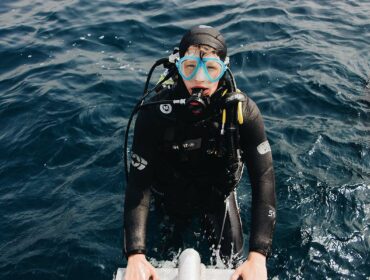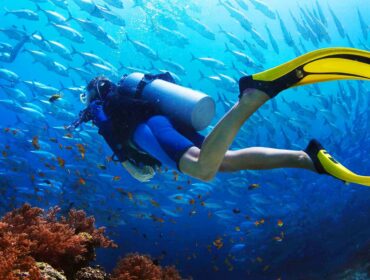It’s always been debated whether one needs be a good strong swimmer to be a scuba diver and whether fitness actually plays an important part in this sport, cause of the weightlessness underwater when using a Buoyancy Control Device (BCD). But truth of the matter is that while almost anyone can dive irrespective of their shape or size, a fitter diver does help being a better diver.
When scuba diving you can’t predict the prevailing conditions all the time and if faced with strong currents on a dive, even the most experienced diver’s strength can be put to the test. Poor physical condition reduces one’s stamina and energy levels which can cause fatigue, another major concern that comes with diving that can even put a diver in risk of cutting down his/her air supply, causing undue stress or panic and increasing the chances of decompression illness. Which is why building up stamina and getting your body in shape can improve your underwater performance by quite a bit.
Experts say that with the right exercise and diet plan divers could cut down their air consumption, prevent cramps, stress, sleep problems and tiredness, as well as reduce blood pressure and the chance of decompression illness.
Getting fit through exercise
Let’s face it to strengthen the muscles you use when you dive i.e your legs, shoulders, arms and back you need to do regular cardiovascular exercise which will improves your breathing and general fitness. You don’t have to go the gym to do cardiovascular exercises – power walking, jogging, cycling, swimming, and even walking up and down stairs will raise your heart rate and improve your stamina. 30 minutes of cardio two or three times a week along with a few exercises targeted at those specific muscles you use in diving is a good way to start.
For the thighs- body weight squats are an ideal way to strengthen those leg muscles that’ll help in a strong current. For the arms and upper body- Push-ups or half push ups (keeping your knees on the ground) will exercise not only your arms but the entire upper body making lifting those heavy cylinders a little easier.The yoga pose known as the cobra pose is a good gentle way of working on your lower back muscles (see how to do the Cobra pose here) to ease that back into lifting and carrying your kit around.
Getting fit by eating healthy
We all know that getting fit involves eating healthier. And it’s no big surprise that a well-balanced diet will help maintain energy levels, reduce fatigue, help control weight which we’ve seen can help improve our diving. So the next time you reach for that greasy bacon post dive, think twice!
For more details on Scuba Diver Diet questions like -what constitutes a good pre-dive breakfast? Is it okay to eat before you dive? Is having breakfast before a dive necessary? What kinds of surface interval snacks are beneficial? check out our post – A Scuba Divers Diet Questions Answered.
And lastly, we should have to say this but DRINK PLENTY OF WATER! Dehydration is thought to be a major causes of muscle cramps, along with fatigue and sodium/electrolyte imbalance. More importantly, not drinking enough water can also increase the risk of decompression illness, so make sure to get enough water in you, before you get in the water!


